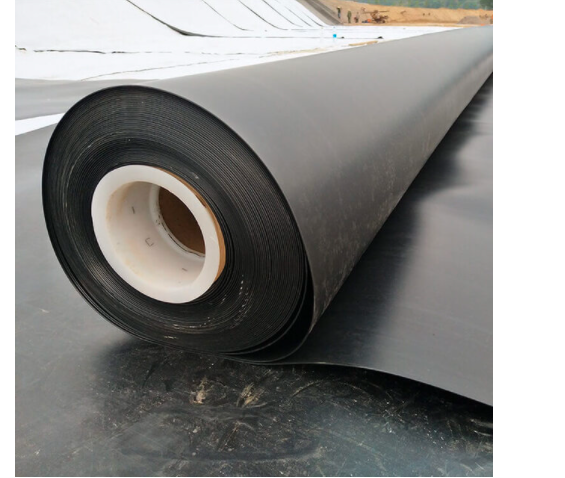- Understanding the Role of Geomembrane Liners in Waste Management
- Innovations in Geomembrane Liners for Water Management
- Geomembrane Liners: A Comprehensive Guide
- The Future of Geomembrane Liners in Civil Engineering
- Geomembrane Liners: Enhancing Landfill Stability
Manager:
WhatsApp:+86 177 0135 2670
Tel:+86 177 0135 2670
Email:marketing@okorder.com
Address:3rd Floor, No.2 Building, No.1 Sanlihe Road
Estanque Geomembrana’s Warm Embrace: A Journey through Innovation and Sustainability
The estanque geomembrana is a responsible guardian of our water, silently sitting in the middle of the vast engineering marvels. Rather than mere plastic sheets, they serve as modern day environmental shields against pollution and depletion. It is these protective walls that shield us from pollution and degradation; this is what comes to my mind while I am gradually digressing into the world of estanque geomembrana.
The Silent Guardians: Unveiling estanque geomembrana
At first sight, estanque geomembrana may seem too obvious: a waterproof membrane that is used for lining water bodies such as ponds, reservoirs or even landfills. However, this simplicity conceals an intricate science behind their development. On the other hand, these are not just barriers but rather frontline defenders against contamination.

A Closer Look: The Science Behind Estanque Geomembrana
The properties of the material form the basis of estanque geomembrana. For example hdpe Geomembranes possess excellent chemical resistance, mechanical strength and durability for their broad applications with comparative economy. The material properties of these types of geomembranes rely on base resin and quality stabilizers as well as additives used in their formulation processes respectively. In service increased resistance to stress cracking UV radiation and mechanical stress can be achieved by such additives.
The Strain of Innovation: Comparing HDPE Geomembranes
All HDPE geomembranes are not made equal. In addition to mechanical & durability characteristics there can be significant variations in performance between different liner materials or products made from HDPE depending upon whether they contain any additives like antioxidants or stabilizers . As a matter of concern, stressed crack susceptibility for HDPE liners due to brittle failure below yielding can occur when this material gets strained.
To address this issue, high stress-crack resistant resin is used to make HDPE geomembranes and strains in the field are limited to avoid stress cracking. The development of new HDPE geomembranes using Polyethylene of Raised Temperature Resistance (PERT) resin has shown promising results, offering higher stress crack resistance and greater tensile strength.
The Tension of Responsibility: Analyzing Geomembranes on Landfill Slopes
Estanque geomembrana finds an application outside the aquatic environments at landfills as well. In this case, the placement of the geomembrane is on a prepared slope surface which is anchored at the crest level. However, during landfill construction including soil cover and waste placements, there may be considerable downslope shear stresses that can be imposed on these liner systems. This necessitates study on how significant geomembrane tension can develop so that use of these liners can be guaranteed safety. Shear deformation properties at the interface between clay and geomembrane have been simulated with three-state elastic-plastic model giving insights into what factors cause strain in them.
A Comprehensive Review: Geomembrane Systems in Hydropower
Geomembrana’s versatility is showcased by its use in hydropower projects. The usage of geomembrane systems in hydropower plants is for sustainable operations, maintenance, upgrading and developmental activities carried out within them. These systems act as rehabilitation and mitigation technology presenting a detailed review of their application in hydropower through examining main opportunities and challenges focusing on materials, historical development, durability levels applied loads designs and potential failure mechanisms for such systems.
The Dynamic Behavior: Exposed Geomembrane Systems in Pressure Waterways
Pressure tunnels and pressure shafts are some of the areas where exposed geomembrane systems could be applied. The effect is to change the boundary condition between fluid and structure resulting in alterations to dynamic behavior of the structure. Fluid-structure interactions should be subjected to design considerations that will enhance system reliability. The problem lies in understanding flow-induced vibrations and their impact on flow features influencing hydropower operations.
Aesthetics and Visual Impact: The Role of Geomembranes in Hydropower Aesthetics
At times, members of the public can see geomembrane systems which can impair structures visually. This occurs particularly with respect to exposed geomembrane systems located at reservoirs, dams, as well as hydraulic canals. Conveniently designed geomembrane system may instead enhance positive impact caused by a structure that appears part of its environment, thus being readily accepted by people living nearby. Conversely, poorly constructed or maintained systems may affect public perception about this infrastructure’s dependability and safety.
In Conclusion: The Future of Estanque Geomembrana
Estanque geomembrana are more than just protective layers; they are however the epitome of our dedication towards environmental sustainability and advancement in technology. In future Estanque geomembrana will likely become even more relevant as we explore new possibilities for sustainable development. Not only should we recognize but also celebrate these attributes—toughness, durability and shielding capability. Long live estanque geomembrana! These products have made our planet richer through various means.
As I recall on how estanque geomembranas have contributed significantly towards human civilization, I am filled with awe and gratitude over this foreknowledge and innovative approach taken during their developments from time immemorial down till now period when they were born into existence till today when they serve us quietly while fulfilling their purpose by protecting and conserving our environment.
- Previous:The Resilient Shield: The Role of Carlisle Geomembrane in Modern Infrastructure
- Next:The Durability and Innovation of HDPE Geomembrane 2mm Thicknesses: A 2mm Journey into the Resilience






